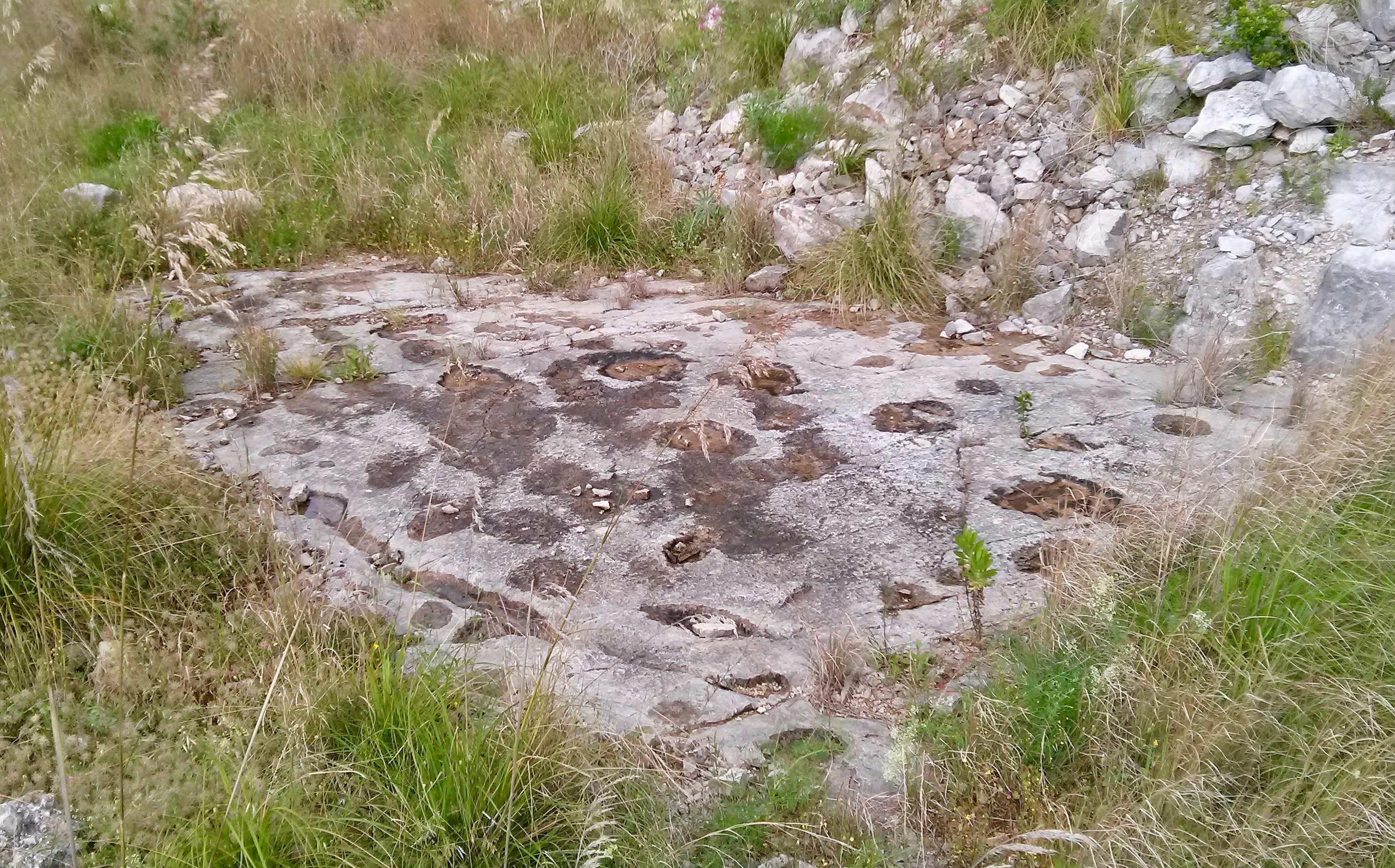The story of the greatest discovery of dinosaur footprints in central Italy, in the Lepini Mountains near Sezze, starts accidentally.
We are in 2003 and Jurassic Park had a profound impact in the lives of each of us making us rediscover the world of dinosaurs and rekindling the desire to be discoverers. In many parts of the world searches for traces of the past life of these animals began.
In Altamura, in Puglia, an amazing site was discovered with over 40,000 well-preserved footprints and all geologists begin to wonder if even in their vicinity they may find some footprints.
Daniele Raponi is a paleontologist from Pontinia who deeply loves the Lepine Mountains and considers them to be one of the best geological parks in Italy:
The Lepini area has 95 different geological features. It 'a kind of paradise for us scholars. We can find the remains of ancient cliffs, tropical lagoons, folds and faults in carbonate rocks, various forms of karst to the extent that we seem to be immersed in a geological Treaty.
Daniele contact Fabio Marco of Vecchia, an expert of dinosaurs and creeping things, and asked him if he were available to study together the area of Lepini. Fabio remembered an article that appeared many years before on Piccolo of Trieste that spoke precisely of the Lepini Mountains and the discovery of a bone of a hadrosaur, a duck-billed dinosaur.
The article was written by an amateur friend with whom he often went to look for footprints in Istria together. This friend had climbed on the Lepini and had found the tracks but had failed to publish anything because he did not record the precise details of the place at the time that all the journals and the scientific community were following the common thinking that in that era there were no dinosaurs in Central Italy.
Besides the two friends there was another geologist, Gaspare Morgante, who joined them and together they convinced the mountain community to fund the trips of Fabio and authorize searches. Thus began the rounds of all the caves in search of a particular geological plain, that of the Cenomanian in the upper part of the Lower Cretaceous period, in which they thought they could find the footprints.
They went through all the quarries in vain and there was only the Sezze quarry, now partly occupied by a concrete plant. As soon as they saw it they understood that it was the right one.
An incredible excitement. Walking in, we immediately recognized the signs of Mud Cracks, i.e. fractures in the mud now lithificated, i.e. had become an integral part of the limestone rock. It was a clear sign of subaerial emergence of the surface. Together with Mud Cracks we immediately recognized "strange" depressions in the overflowing of the original rock sediment had also become rock. In practice the now fossilized dinosaur footprint had been filled and covered, at a different time, with more carbonate mud that we have taken to with our hammers to bring to light the original footprints. We were amazed by recognizing the signs of the passage of these animals.
In Sezze there are both herbivorous sauropods mid-size, between 8-10 meters long and weighing several tons. Then there are species of carnivores.
There are over 200 dinosaur footprints, from different species of animals on three different geological layers: this is the area of the regional Sezze park that now the Lazio Region has increased to a Natural Monument.
For more information about these dinosaurs you can go on the website of the Society of Lepini http://compagniadeilepini.it promoting this incredible land.







Follow us